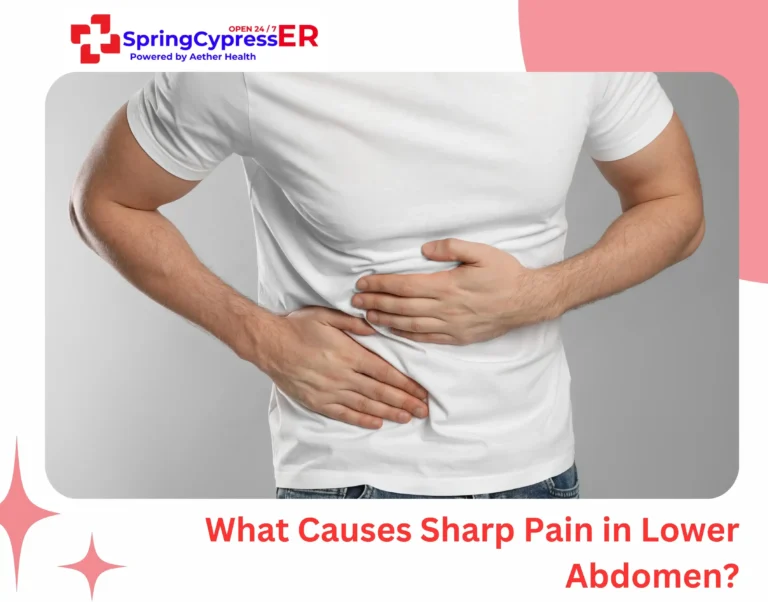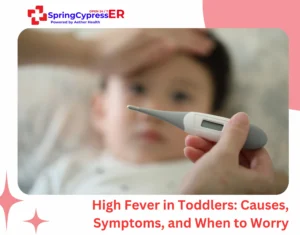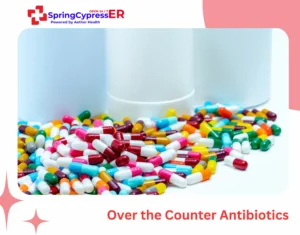Most people assume sharp pain in lower abdomen means appendicitis, but dozens of conditions cause identical symptoms. Location, timing, and accompanying signs determine whether you’re facing a medical emergency or manageable issue.
Experience Lower Abdominal Pain
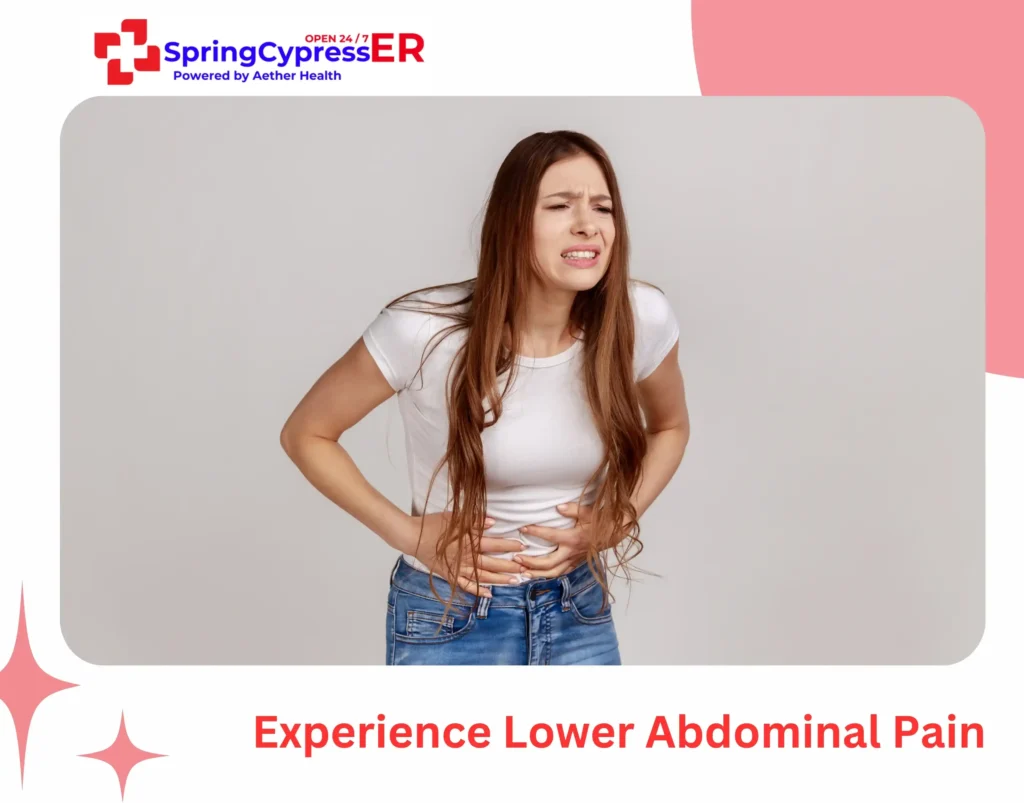
Both men and women experience lower abdominal pain from vastly different conditions. Appendicitis, kidney stones, ovarian cysts, and hernias all present with similar symptoms initially.
Let’s understand 13 causes of sharp pain in lower abdomen and the signs that indicate the need for emergency care.
1. Appendicitis
Your appendix is a small, finger-like pouch attached to your large intestine. When it gets blocked (usually by hardened stool, swollen tissue, or rarely a foreign object), bacteria can multiply inside it, causing inflammation and infection. This is appendicitis, and it’s one of the most common reasons people need emergency surgery.
Appendicitis pain has a typical pattern that doctors look for:
Early Stage (First few hours) of Appendicitis:
- Dull, achy pain around your belly button
- You lose your appetite completely – this is often the very first sign
- Mild nausea
- Low fever (around 99-100°F)
Middle Stage (6-12 hours later):
- Pain moves to your lower right side and becomes much sharper
- The pain gets worse when you move, cough, sneeze, or even laugh
- Vomiting often starts after the pain has moved
- Fever rises (100-102°F)
- Your abdomen becomes tender to touch
- You might walk hunched over to avoid jarring the painful area
Advanced Stage (if not treated within 24 hours):
- Severe pain that may spread across your entire abdomen
- High fever (over 102°F)
- Signs of serious infection throughout your body
- Your abdomen may become swollen and rigid
Doctors will examine your abdomen, check your blood for signs of infection, and likely order a CT scan to confirm the diagnosis. Most people need surgery to remove their appendix, usually through small incisions (laparoscopic surgery) which means faster recovery and smaller scars.
If your severe appendix pain suddenly stops, don’t assume you’re better, this could mean your appendix has burst, which is a medical emergency requiring immediate surgery.
2. Diverticulitis
As we age, small pouches (called diverticula) can form in the walls of our colon, especially if we don’t eat enough fiber. Most people with these pouches never have problems, but sometimes they can become inflamed or infected, causing diverticulitis.
Main Symptoms of Diverticulitis:
- Sharp, cramping pain usually on the left side of your lower abdomen (though it can be on the right in some people)
- The pain often comes on gradually and gets worse over hours or days
- Fever and chills
- Nausea and sometimes vomiting
- Changes in bowel habits
- Bloating and gas
- Feeling generally sick and tired
When Diverticulitis Gets Serious:
- High fever (over 101°F)
- Severe abdominal pain
- Unable to keep fluids down
- Signs of dehydration
Mild cases can often be treated at home with antibiotics, a liquid diet for a few days, and rest. More severe cases might require hospitalization for IV antibiotics and monitoring. In rare cases where complications develop (like abscesses or tears in the colon), surgery might be necessary.
3. Ovarian Cysts
Most women develop ovarian cysts at some point, and most are harmless. These are fluid-filled sacs that form on or in the ovaries. Problems arise when they get very large, rupture, or cause the ovary to twist.
Symptoms of Problematic Cysts:
- Sharp or dull pain on one side of your lower abdomen
- Pain that comes and goes or is constant
- Pain during sex
- Irregular periods
- Bloating or feeling full quickly when eating
- Nausea and vomiting
4. Ovarian Torsion (Twisted Ovary)
This is when an ovary twists around its supporting tissues, cutting off blood supply. It’s a medical emergency that can cause sharp pain in lower abdomen.
Warning Signs of Ovarian Torsion:
- Sudden, severe pain on one side
- Nausea and vomiting
- Pain that doesn’t improve with over-the-counter medications
- Sometimes fever
If caught quickly, surgeons can often untwist the ovary and save it. If too much time passes, the ovary might need to be removed.
5. Ectopic Pregnancy
In a normal pregnancy, the fertilized egg implants in the uterus. In an ectopic pregnancy, it implants somewhere else, usually in a fallopian tube. As the pregnancy grows, it can rupture the tube, causing dangerous internal bleeding.
Critical Warning Signs of Ectopic Pregnancy:
- Sharp pain on one side of your lower abdomen
- Vaginal bleeding (might be light or heavy)
- Shoulder pain (from internal bleeding irritating your diaphragm)
- Dizziness, weakness, or fainting
- Nausea and vomiting
- Missed period or positive pregnancy test
A ruptured ectopic pregnancy can cause life-threatening internal bleeding. If you think you might be pregnant and have severe abdominal pain, seek emergency care immediately.
6. Kidney Stones
Kidney stones develop when minerals and salts in your urine stick together and form hard deposits. They can be as small as a grain of sand or as large as a golf ball.
Typical Pain Pattern:
- Starts in your back or side, just below your ribs
- Moves to your lower abdomen and groin
- Comes in waves – severe pain followed by brief relief
- Often described as the worst pain people have ever experienced
- Pain might shift as the stone moves through your urinary system
Other Symptoms of Kidney Stones
- Pink, red, or brown urine (from small amounts of blood)
- Cloudy or foul-smelling urine
- Nausea and vomiting
- Feeling like you need to urinate urgently
- Urinating more often than usual
- Burning sensation when urinating
- Fever and chills (if infection is also present)
Small stones may pass with fluids and pain relief. Larger stones may require medical intervention like lithotripsy or surgical removal.
7. Urinary Tract Infections (UTI)
A urinary tract infection is another reason for sharp pain in lower abdomen. UTIs occur when bacteria (usually from your digestive tract) travel up your urinary system. When the infection reaches your bladder, it’s called cystitis and can cause significant lower abdominal pain.
Symptoms to Watch For
- Sharp pain or burning when urinating
- Pressure or cramping in your lower abdomen or pelvis
- Feeling like you need to urinate urgently, even when your bladder is empty
- Urinating frequently but only small amounts
- Cloudy, strong-smelling, or bloody urine
- Low-grade fever
If Infection Spreads to Kidneys:
- High fever and chills
- Back or side pain
- Nausea and vomiting
- Feeling very sick
Early treatment with antibiotics is effective, but untreated UTIs can spread to the kidneys and become serious.
8. Pelvic Inflammatory Disease (PID)
PID is an infection of the female reproductive organs (uterus, fallopian tubes, and ovaries). It’s usually caused by sexually transmitted bacteria that travel up from the vagina and cervix.
Common PID Symptoms:
- Lower abdominal or pelvic pain
- Pain during sex
- Irregular menstrual bleeding
- Heavy or painful periods
- Unusual vaginal discharge with bad odor
- Fever and chills
- Painful or frequent urination
Serious Complications:
- Chronic pelvic pain
- Infertility
- Ectopic pregnancy
- Abscess formation
While PID symptoms like irregular bleeding patterns are usually infection-related, persistent reproductive symptoms warrant thorough evaluation to rule out other conditions.
9. Hernia
A hernia occurs when part of an organ (usually intestine) pushes through a weak spot in your abdominal muscles. Inguinal hernias (in the groin area) are the most common type that causes lower abdominal pain.
Recognizing a Hernia
- A visible bulge in your groin or lower abdomen
- Pain or discomfort, especially when bending over, coughing, or lifting
- A heavy or dragging sensation in your groin
- Pain that gets worse throughout the day
- In men, pain or swelling around the testicles
When Hernias Become Dangerous
Strangulated Hernia: This happens when the blood supply to the herniated tissue gets cut off.
Signs of strangulated hernia include:
- Sudden severe pain
- Nausea and vomiting
- The bulge becomes firm and can’t be pushed back in
- Fever
- Rapid heart rate
Most hernias eventually need surgical repair. The surgery can often be done with small incisions (laparoscopic) or through traditional open surgery, depending on the size and location of the hernia.
10. Gastrointestinal Issues (Gas, Constipation, IBS)
Digestive disorders are frequent causes of lower abdominal pain. Gas can stretch the intestines, while constipation can create significant discomfort.
Irritable Bowel Syndrome (IBS) can lead to recurring sharp cramps, particularly after meals or during stress.
Additional Symptoms:
- Bloating
- Diarrhea or constipation
- Mucus in stool
Managing IBS:
- Identify and avoid trigger foods
- Manage stress through relaxation techniques
- Regular exercise
- Adequate fiber intake
- Medications as prescribed by your doctor
Usually not an emergency, but if symptoms persist consult a doctor to rule out other causes.
11. Endometriosis
In endometriosis, tissue similar to the lining of the uterus grows outside the uterus – on ovaries, fallopian tubes, or other pelvic organs. This tissue still responds to monthly hormonal changes, causing inflammation and pain.
Pain Patterns:
- Severe menstrual cramps that get worse over time
- Lower abdominal and pelvic pain that may be constant
- Pain during or after sex
- Pain with bowel movements or urination during menstrual periods
- Heavy or irregular periods
Other Effects:
- Fatigue
- Diarrhea, constipation, or nausea during periods
- Difficulty getting pregnant
Not an emergency but it can severely impact quality of life and fertility. Long-term management may include medications or surgery.
12. Crohn’s Disease or Ulcerative Colitis
These are chronic inflammatory bowel diseases (IBD) that can cause persistent inflammation in the GI tract.
Additional Symptoms:
- Bloody diarrhea
- Fatigue
- Weight loss
- Low-grade fever
Treatment focuses on inflammation control through medications, dietary changes, and sometimes surgery during flare-ups.
13. Menstrual Cramps: Normal vs. Concerning
Many women experience cramping during their periods due to uterine contractions that help shed the lining.
Typical Characteristics of Menstrual Cramps:
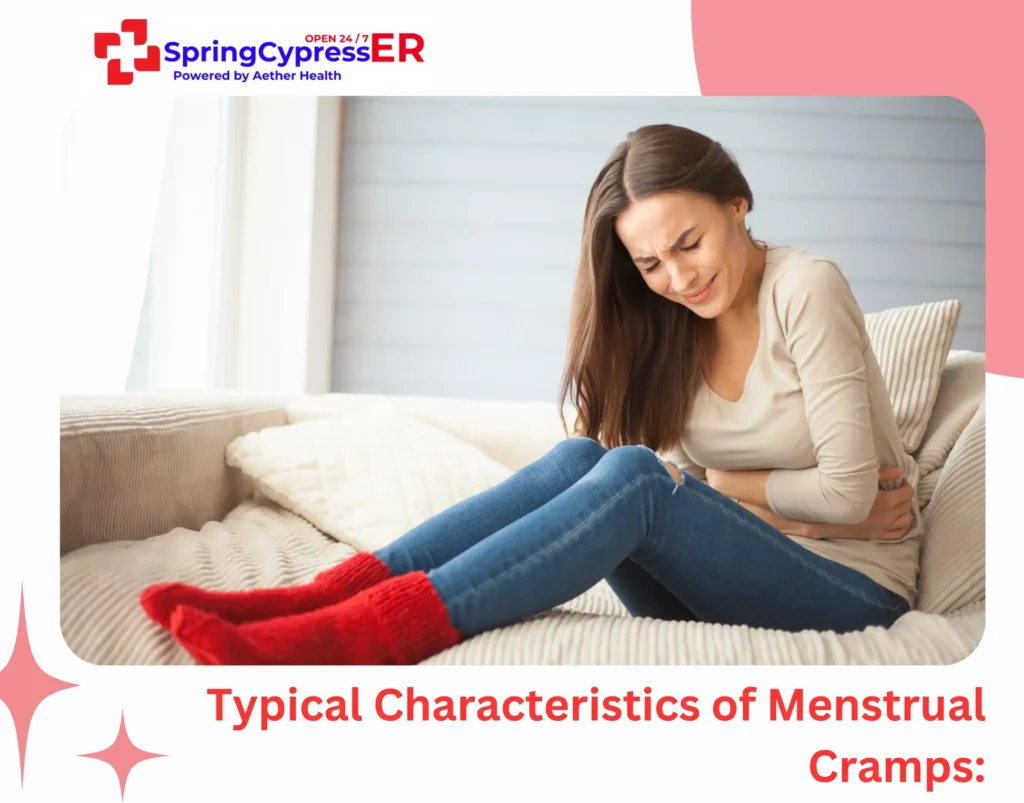
- Pain starts 1-2 days before period begins
- Cramping in lower abdomen that may spread to back and thighs
- Pain usually improves after the first few days of period
- Manageable with over-the-counter pain relievers
When Cramps Aren’t Normal:
- Pain that interferes with daily activities
- Pain that gets worse over time
- Severe pain that doesn’t respond to pain relievers
- Pain outside of menstrual periods
- Heavy bleeding with clots
Over-the-counter pain relievers, heating pads, and lifestyle changes often help. Consult a doctor if symptoms worsen, persist beyond a few days, or are accompanied by heavy bleeding, severe cramping, or unusual discharge.
Key TakeAway
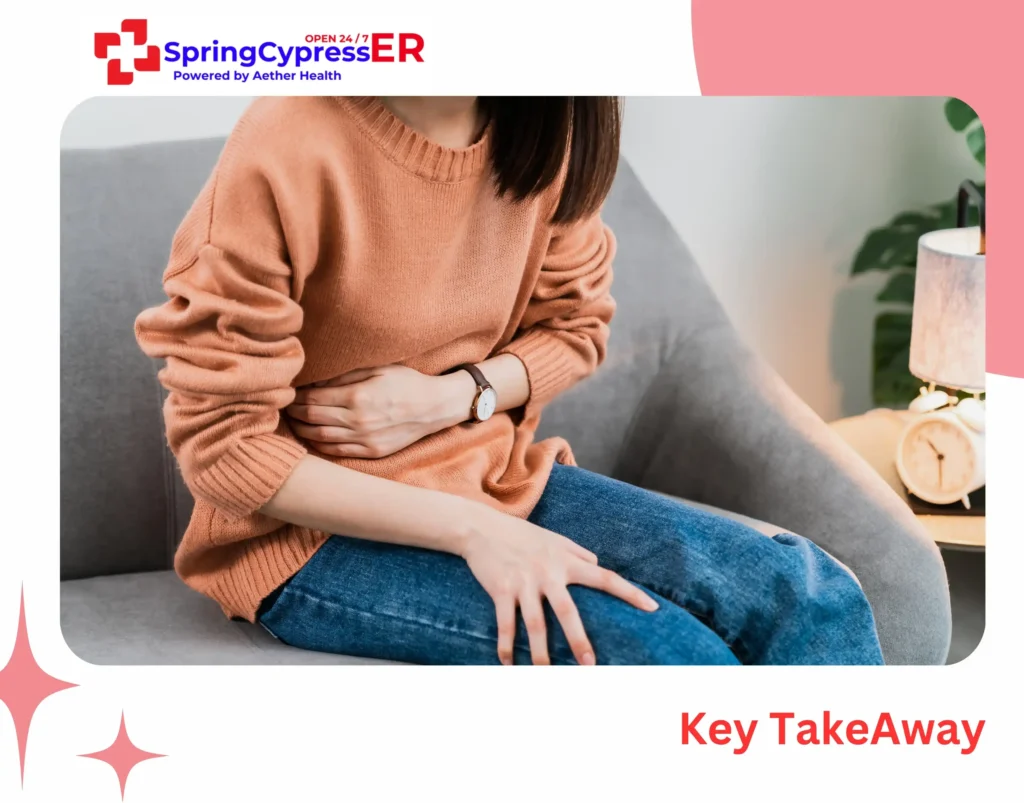
Sharp pain in the lower abdomen can be caused by conditions, ranging from minor digestive issues to serious medical emergencies. While some causes are temporary and resolve on their own, others require prompt medical attention to prevent serious complications.
The key is recognizing when sharp pain in the lower abdomen warrants immediate emergency care versus when it’s safe to wait and consult your regular doctor.
At Aether Health – Spring Cypress ER, our expert team uses various imaging and lab tests to pinpoint the exact cause of your lower abdominal pain. We’re available 24/7, offering fast, expert treatment for everything from minor issues to critical conditions. Whether it’s sharp abdominal pain or another urgent concern, our team is here to provide emergency care with minimal wait times.
FAQs
1. Can sharp lower abdominal pain come and go?
Yes, intermittent sharp pain can occur with conditions like gas, constipation, ovulation (mittelschmerz), or early appendicitis. However, if the pain intensifies or becomes more frequent, seek medical attention promptly.
2. Can dehydration cause sharp abdominal pain?
Yes, dehydration can lead to cramping and abdominal pain due to slowed digestion, electrolyte imbalances, or kidney-related stress. Staying hydrated is crucial, especially in hot weather or during illness.
3. How can I tell the difference between gas pain and something more serious?
Gas pain is often relieved by passing gas or a bowel movement and may feel like bloating. In contrast, serious conditions usually involve persistent pain, fever, vomiting, or changes in bowel habits. If pain doesn’t go away, get checked.
4. What does it mean if the pain shifts from the middle of the abdomen to the lower right side?
This classic pattern may suggest appendicitis. The pain typically starts near the navel and shifts lower right over several hours. Immediate medical evaluation is essential to avoid complications like a ruptured appendix.
5. Should I be concerned if the pain is on only one side?
One-sided pain may point to issues like kidney stones, ovarian cysts, or diverticulitis. Side-specific pain is an important clue doctors use during diagnosis, so report it accurately when seeking care.
6. Can lower abdominal pain be related to stress or anxiety?
Stress and anxiety can lead to digestive issues like irritable bowel syndrome (IBS), which may cause sharp or cramping lower abdominal pain. However, rule out physical causes first before assuming it’s stress-related.

